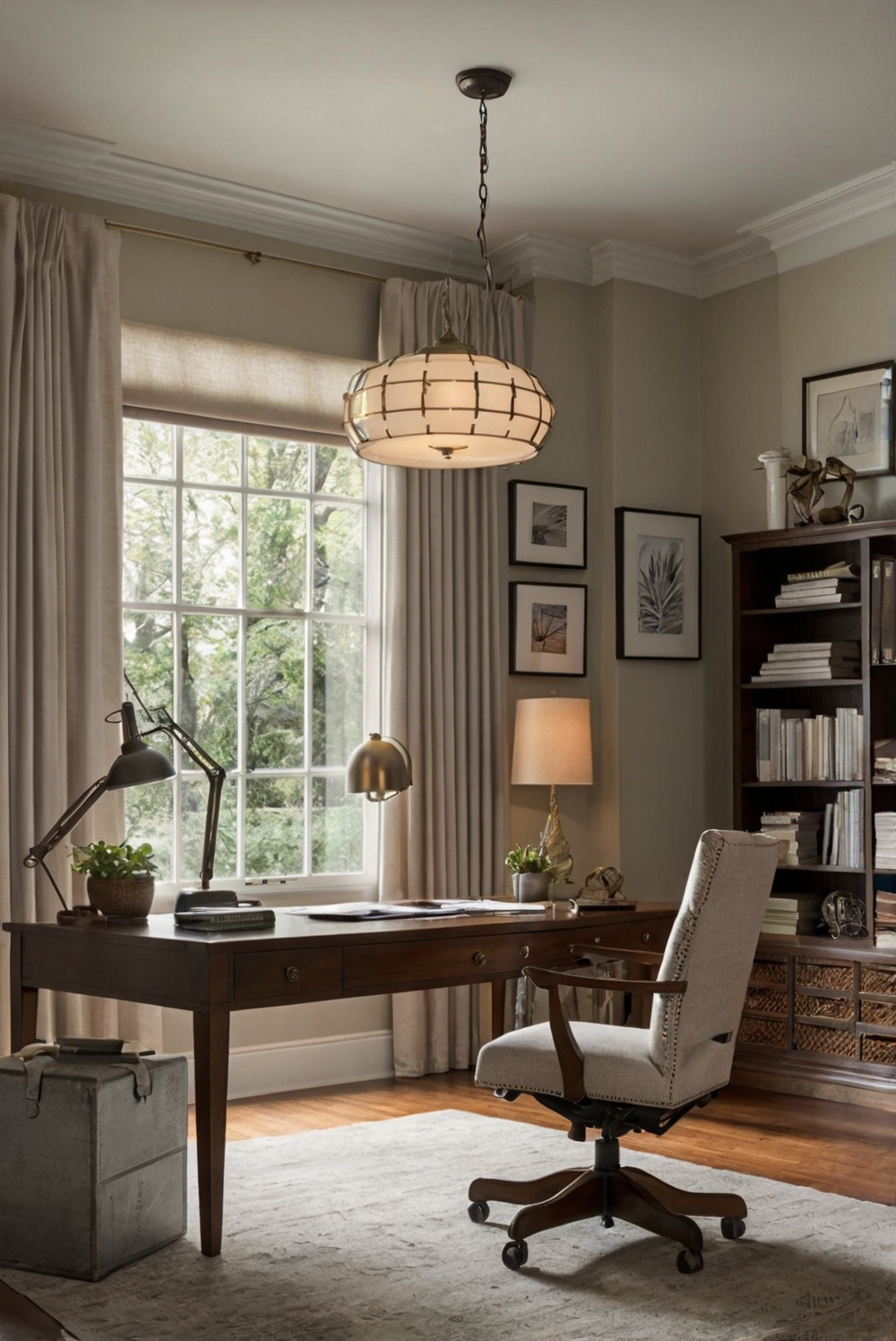Explore the advantages of lighting controls in a home office to maximize productivity and save energy. Discover how smart lighting can enhance your interior design routine.
**What Are the Benefits of Using Lighting Controls to Save Energy in a Home Office?**
Benefits of using lighting controls in a home office include energy savings, increased comfort, improved productivity, and extended bulb life. By adjusting the lighting levels based on the time of day and task at hand, you can reduce electricity consumption and cut down on utility bills. Additionally, the ability to customize the lighting can create a more conducive work environment, which may lead to higher productivity levels. Using dimmers and sensors can also help extend the lifespan of your light bulbs, saving you money on replacements. To make the most of lighting controls, consider investing in energy-efficient LED bulbs and scheduling regular maintenance checks.
Benefits of Using Lighting Controls to Save Energy in a Home Office
Lighting controls offer numerous benefits when it comes to saving energy in a home office. By implementing these controls, you can significantly reduce your energy consumption and minimize your electricity bills. Let’s explore some of the key advantages of using lighting controls in a home office:
Increased Energy Efficiency
One of the most important benefits of using lighting controls in a home office is the increased energy efficiency they provide. By using controls such as dimmers, timers, and occupancy sensors, you can adjust the lighting levels based on the natural light available and the presence of individuals in the room. This helps to minimize energy wastage and ensures that lights are only on when needed, leading to significant energy savings over time.
Cost Savings
Implementing lighting controls in a home office can result in substantial cost savings on electricity bills. By reducing energy consumption, you can lower your monthly expenses and increase your savings in the long run. The initial investment in lighting controls is often offset by the savings achieved through reduced energy usage, making it a cost-effective solution for homeowners.
Enhanced Comfort and Productivity
Proper lighting control in a home office can enhance comfort and boost productivity for individuals working in the space. By adjusting the lighting levels to suit specific tasks or preferences, you can create a more comfortable working environment that promotes concentration and focus. This can improve overall productivity and enhance the quality of work carried out in the home office.
Improved Health and Well-being
Another benefit of using lighting controls in a home office is the positive impact on health and well-being. Proper lighting can help to reduce eye strain and prevent headaches that may result from poor lighting conditions. By adjusting the lighting levels based on the time of day and specific tasks, you can create a healthier and more comfortable workspace that promotes well-being.
Environmental Sustainability
By reducing energy consumption through the use of lighting controls in a home office, homeowners can contribute to environmental sustainability. Lower energy usage means reduced greenhouse gas emissions and less strain on natural resources. Choosing energy-efficient lighting options and implementing controls can help to minimize your carbon footprint and protect the environment for future generations.
In conclusion, using lighting controls in a home office offers a range of benefits, including increased energy efficiency, cost savings, enhanced comfort and productivity, improved health and well-being, and environmental sustainability. By incorporating these controls into your home office setup, you can create a more energy-efficient and environmentally friendly workspace while also improving your overall well-being and productivity.
1. How can lighting controls help save energy in a home office?
Lighting controls such as motion sensors, timers, and dimmers can help save energy in a home office by automatically turning off lights when not in use or adjusting brightness levels based on natural light. This can significantly reduce energy consumption and lower electricity bills. Studies have shown that implementing lighting controls in a home office can lead to energy savings of up to 50%. By using lighting controls, homeowners can create a more energy-efficient workspace without compromising on comfort or productivity.
2. What are the financial benefits of using lighting controls in a home office?
Using lighting controls in a home office can result in substantial financial benefits. By reducing energy consumption, homeowners can lower their electricity bills and save money in the long run. Additionally, some utility companies offer rebates or incentives for implementing energy-saving measures like lighting controls. According to the U.S. Department of Energy, households can save an average of $100 per year by using energy-efficient lighting controls. Investing in lighting controls can be a cost-effective way to improve the energy efficiency of a home office and reduce operating expenses.
3. How do lighting controls improve comfort and productivity in a home office?
In addition to saving energy and money, lighting controls can also enhance comfort and productivity in a home office. By allowing users to customize the lighting levels based on their needs, lighting controls create a more pleasant and productive work environment. Dimmable lights, for example, can help reduce glare and eye strain, while daylight sensors can automatically adjust brightness levels to mimic natural light. Studies have shown that proper lighting in a workspace can improve concentration, reduce fatigue, and increase overall productivity. By using lighting controls, homeowners can create a comfortable and well-lit home office that promotes efficiency and well-being.
4. Are there different types of lighting controls available for home offices?
Yes, there are several types of lighting controls available for home offices, each with its own benefits and functions. Some common types of lighting controls include occupancy sensors, which detect motion and automatically turn lights on or off; dimmers, which allow users to adjust the brightness levels of lights; timers, which schedule when lights should be turned on or off; and daylight sensors, which adjust lighting levels based on natural light. Additionally, smart lighting systems can be controlled remotely via a smartphone or voice commands, offering even more flexibility and convenience. Homeowners can choose the type of lighting controls that best suit their needs and preferences to create a customized and energy-efficient workspace.
5. What are some tips for effectively using lighting controls in a home office?
To maximize the benefits of lighting controls in a home office, homeowners can follow some simple tips and strategies. First, it’s important to choose energy-efficient light bulbs, such as LEDs, to complement the lighting controls and further reduce energy consumption. Second, positioning sensors and switches strategically can ensure that lights are only activated when needed. Third, setting timers to align with work schedules can help optimize energy savings. Finally, regularly monitoring energy usage and adjusting lighting controls as needed can help maintain efficiency and identify areas for improvement. By incorporating these tips into their home office setup, homeowners can make the most of lighting controls to save energy and create a comfortable workspace.







